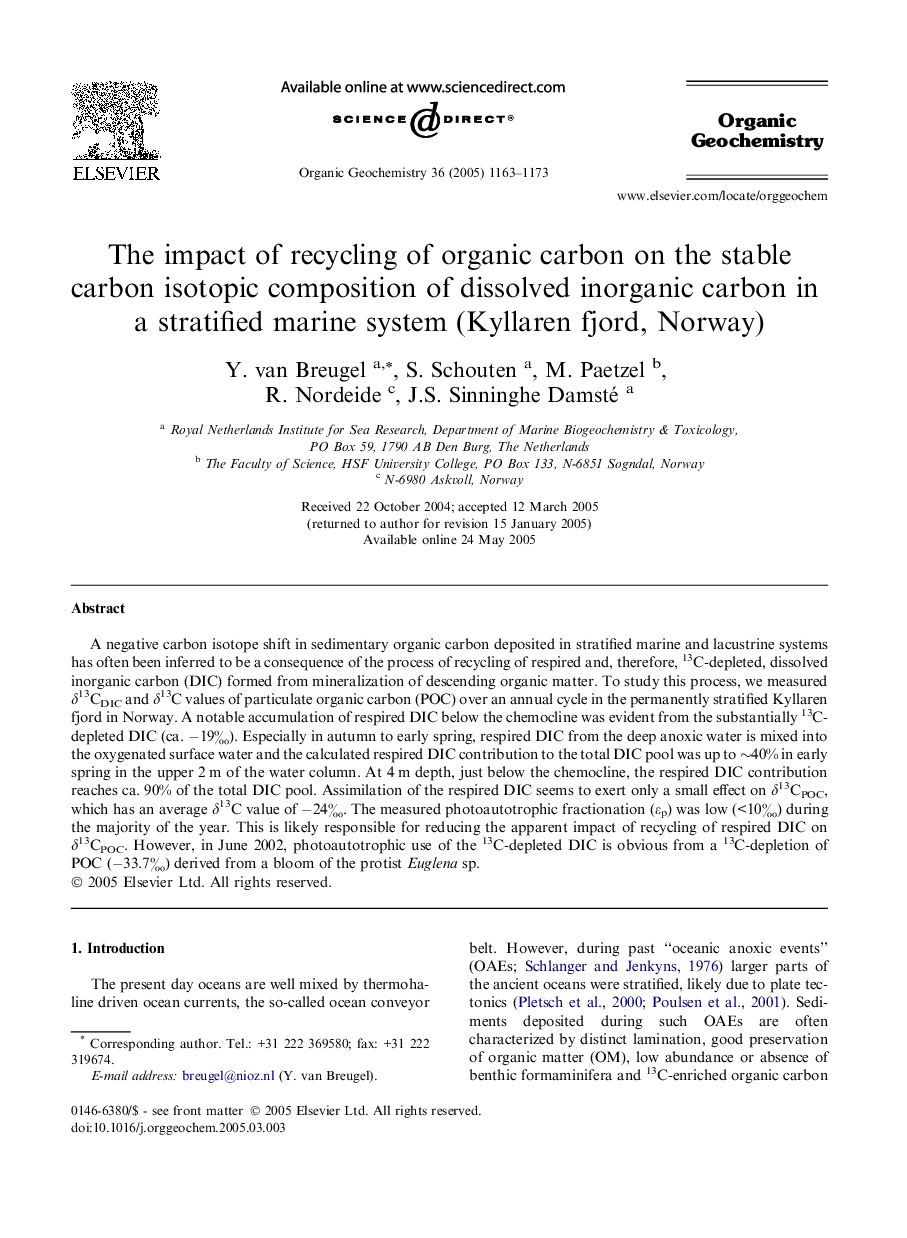| Article ID | Journal | Published Year | Pages | File Type |
|---|---|---|---|---|
| 9556470 | Organic Geochemistry | 2005 | 11 Pages |
Abstract
A negative carbon isotope shift in sedimentary organic carbon deposited in stratified marine and lacustrine systems has often been inferred to be a consequence of the process of recycling of respired and, therefore, 13C-depleted, dissolved inorganic carbon (DIC) formed from mineralization of descending organic matter. To study this process, we measured δ13CDIC and δ13C values of particulate organic carbon (POC) over an annual cycle in the permanently stratified Kyllaren fjord in Norway. A notable accumulation of respired DIC below the chemocline was evident from the substantially 13C-depleted DIC (ca. â19â°). Especially in autumn to early spring, respired DIC from the deep anoxic water is mixed into the oxygenated surface water and the calculated respired DIC contribution to the total DIC pool was up to â¼40% in early spring in the upper 2 m of the water column. At 4 m depth, just below the chemocline, the respired DIC contribution reaches ca. 90% of the total DIC pool. Assimilation of the respired DIC seems to exert only a small effect on δ13CPOC, which has an average δ13C value of â24â°. The measured photoautotrophic fractionation (εp) was low (<10â°) during the majority of the year. This is likely responsible for reducing the apparent impact of recycling of respired DIC on δ13CPOC. However, in June 2002, photoautotrophic use of the 13C-depleted DIC is obvious from a 13C-depletion of POC (â33.7â°) derived from a bloom of the protist Euglena sp.
Related Topics
Physical Sciences and Engineering
Chemistry
Organic Chemistry
Authors
Y. van Breugel, S. Schouten, M. Paetzel, R. Nordeide, J.S. Sinninghe Damsté,
